How climate change worsens heatwaves, droughts, wildfires and floods
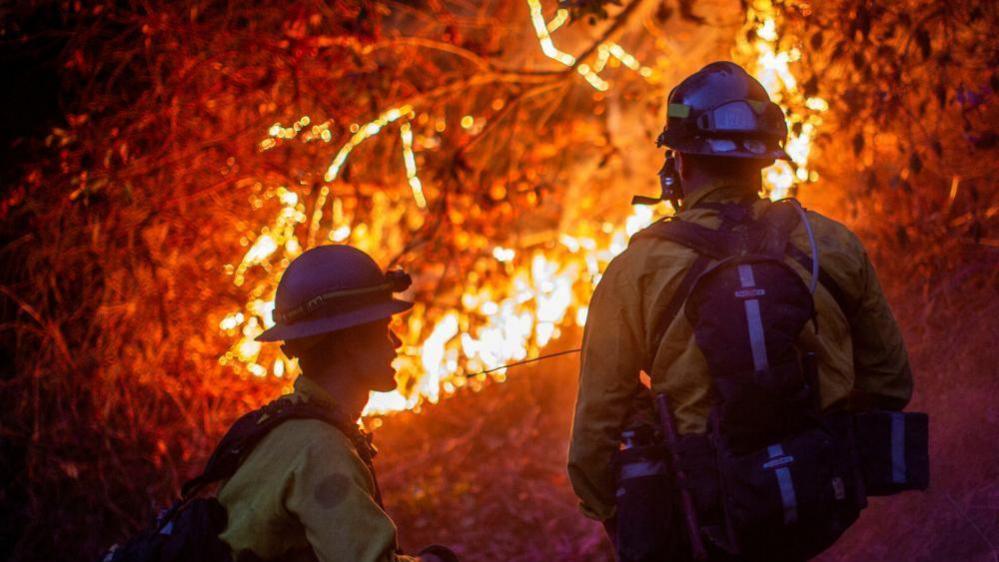
The Los Angeles fires of January 2025 were one of the most expensive weather-related disasters in US history
- Published
Many extreme weather events are becoming more common and more intense around the world, fuelled by human activities such as the burning of fossil fuels.
Here are four ways that rising temperatures are affecting weather extremes.
1. Hotter, longer heatwaves
Even a small increase in average temperatures makes a big difference to heat extremes.
As the range of daily temperatures shifts to warmer levels, hotter days become more likely and more intense.
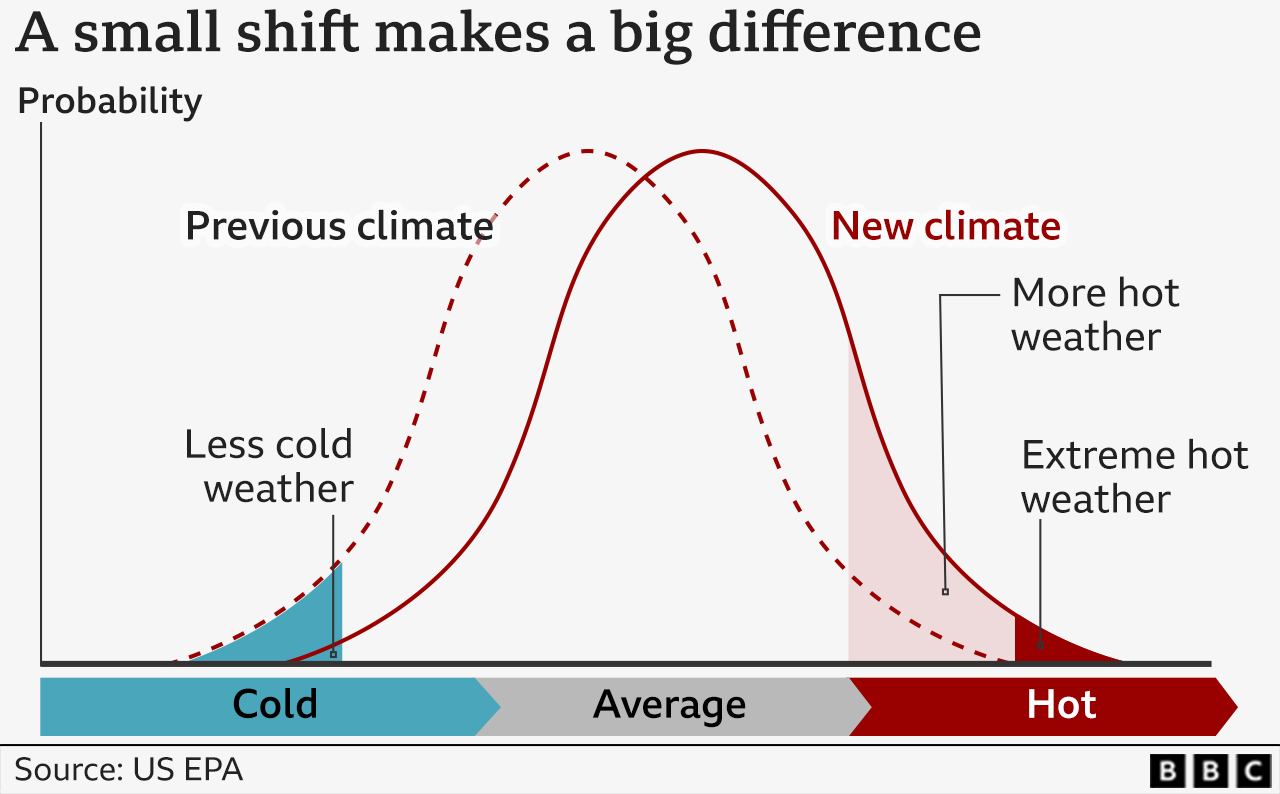
Scientists use computer models to simulate how individual extreme weather events unfold in two scenarios:
today's world with about 1.3C or more of human-caused warming
a hypothetical world without human influence on the climate.
That way, they can estimate, external how much a particular heatwave, storm or drought was affected by climate change.
In the UK, temperatures topped 40C for the first time on record in July 2022, causing extensive disruption.
This would have been extremely unlikely without climate change, according to scientists at the World Weather Attribution group (WWA).
In June 2025, the Met Office said the chance of seeing temperatures above 40C was now more than 20 times greater than during than 1960s. And the likelihood of reaching such temperatures will continue to rise as the world warms, it said.
Around the world, climate change has made countless heatwaves much more likely and more intense, the WWA says.
Examples include 48C temperatures in Mali in April 2024 and prolonged, widespread heat in Scandinavia in July 2025, with temperatures regularly passing 30C in Norway.
Heatwaves can happen as a result of heat domes, external, which are created when an area of high pressure stays over the same area for days or weeks, trapping hot air underneath.
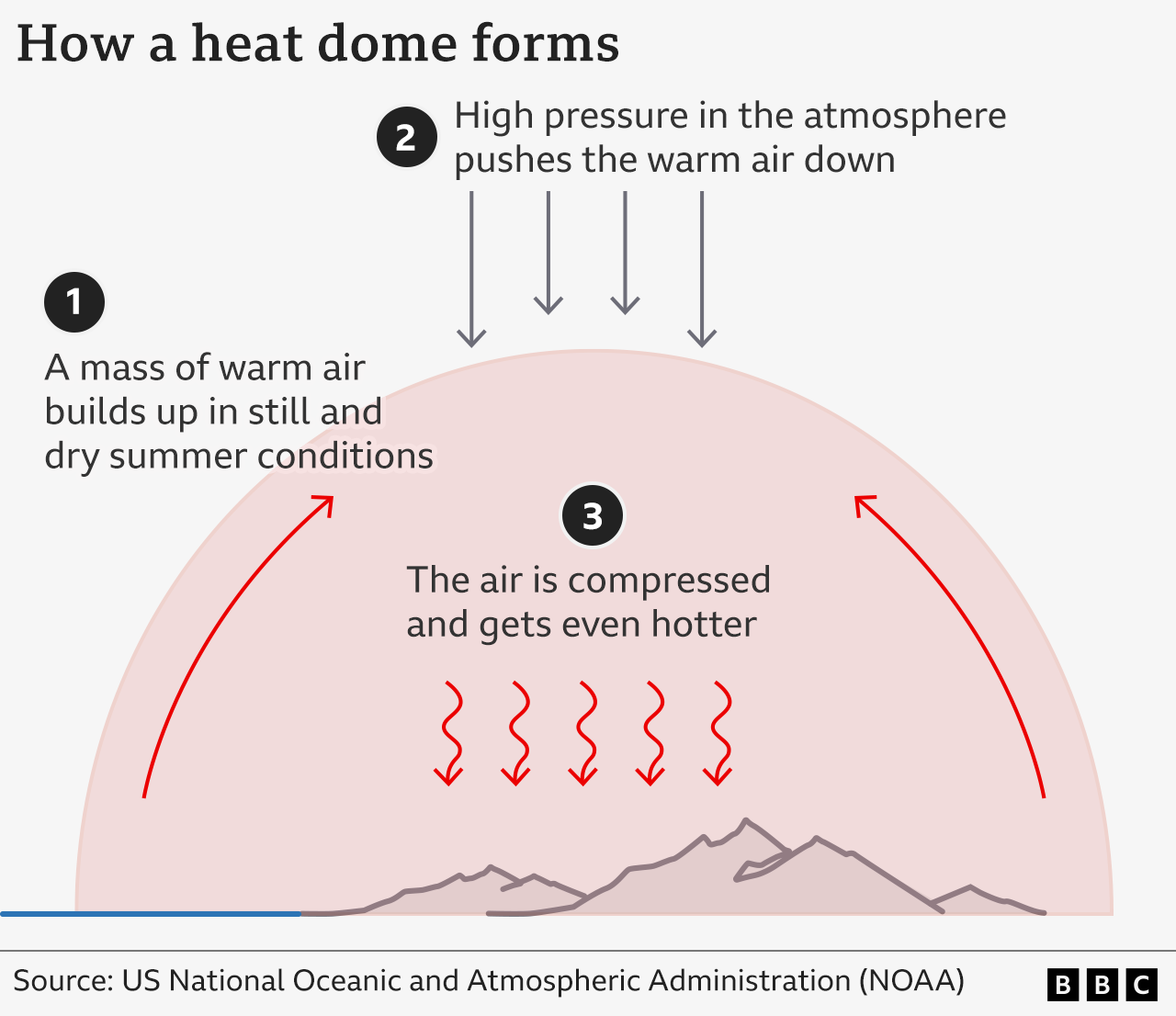
One theory suggests that higher temperatures in the Arctic - which has warmed nearly four times faster than the global average, external - are affecting the fast band of winds high in the atmosphere known as the jet stream.
That could be making heat domes more likely, although this is not clear cut.
2. More extreme rain
For every 1C rise in air temperature, the atmosphere can hold about 7% more moisture, external.
With more moisture available, rainfall can become heavier.

Between October 2023 and March 2024, the UK experienced the second-wettest such period on record.
This level of rainfall was made at least four times as likely by human-caused warming, according to the WWA.
In September 2024, deadly floods hit much of central Europe, including Poland, the Czech Republic, Romania, Austria and Italy.
The intensity of the rainfall over four days in mid-September was made twice as likely by climate change, the WWA says.
Globally, heavy rainfall events have become more frequent and intense over most land regions due to human activity, according to the UN's climate body, the IPCC, external
It says this pattern will continue with further warming.
Various factors affect whether such heavy rainfall leads to flooding, including the quality of flood defences and drainage systems.
3. Longer droughts
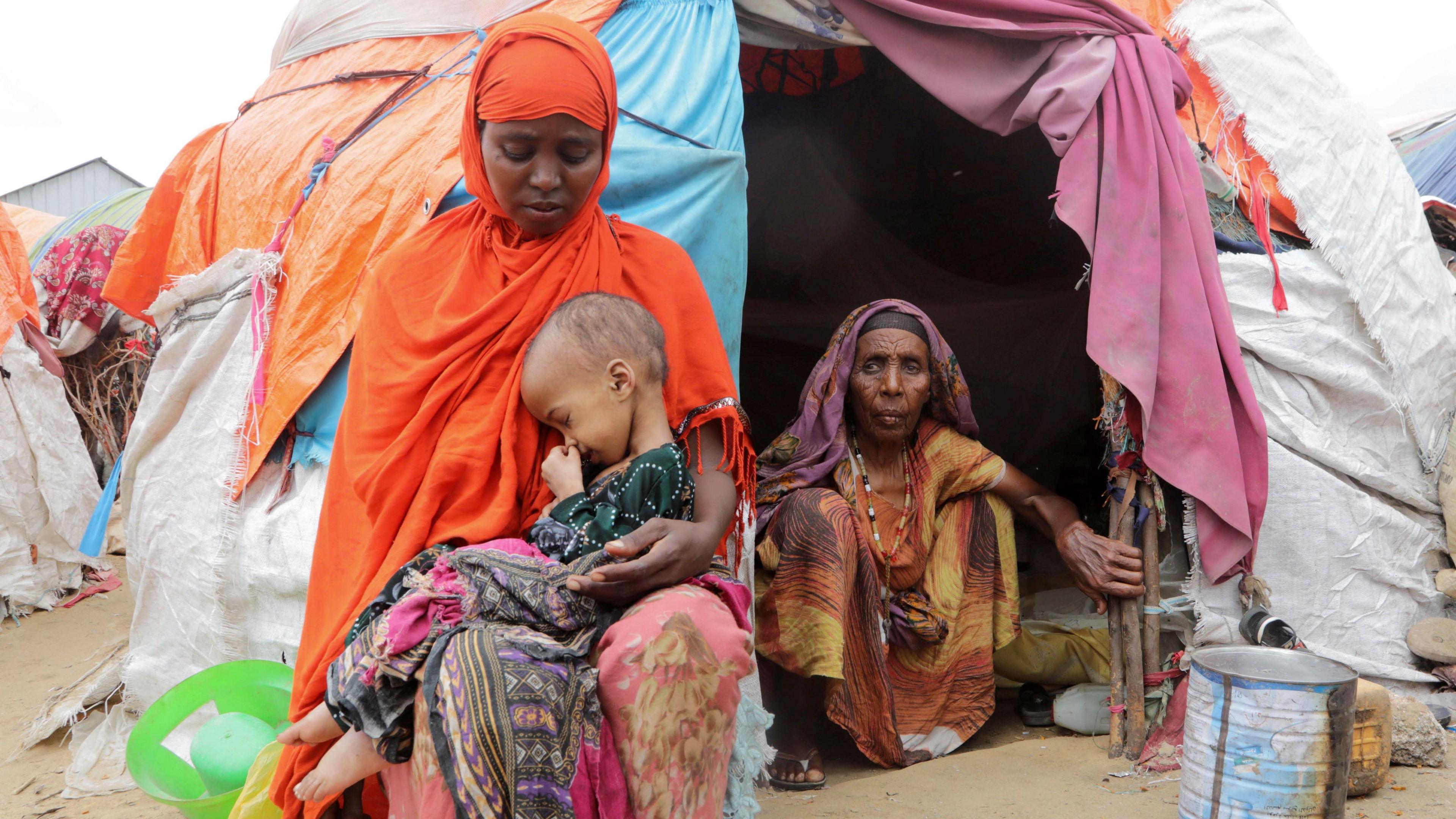
Successive failed rainy seasons between 2020 and 2022 displaced more than a million people in Somalia alone, some of whom took shelter in makeshift camps
Linking climate change with specific individual droughts can be difficult, because there are lots of different factors that affect the availability of water.
Natural weather systems, for example, can play a key role, as was the case with drought in southern Africa in early 2024.
But climate change is shifting global rainfall patterns. While some of the world is getting wetter, other parts are becoming drier, which can make them more prone to drought.
And heatwaves fuelled by climate change can worsen dry conditions when they do occur, by increasing evaporation from the soil.
This makes the air above warm up more quickly, leading to more intense heat.
During periods of hot weather, increased demand for water, especially from farmers, puts even more stress on the water supply.
In parts of East Africa, there were five failed rainy seasons in a row, external between 2020 and 2022, as the region suffered its worst drought for 40 years. This displaced 1.2 million people in Somalia alone, external.
Climate change has made droughts like this at least 100 times more likely, according to the WWA.
Human-caused warming was also the main driver of drought in the Amazon rainforest in the second half of 2023, the WWA found. This was the region's worst drought since modern records began.
4. More fuel for wildfires
Fires happen naturally in many parts of the world.
It is difficult to know if climate change has caused or worsened a specific wildfire because other factors are also relevant, such as changes to the way land is used.
But climate change is making the weather conditions needed for wildfires to spread more likely, the IPCC says, external.
Extreme, long-lasting heat draws more moisture out of soils and vegetation.
These tinder-dry conditions provide fuel for fires, which can spread at an incredible speed, particularly if winds are strong.
The north-east Amazon experienced an extreme fire season in early 2024. Climate change made the weather conditions that helped the fires to spread between 30 and 70 times more likely, according to a report on the state of global wildfires, external.
That meant the burned area was about four times greater than if humans hadn't heated up the planet, the scientists found.
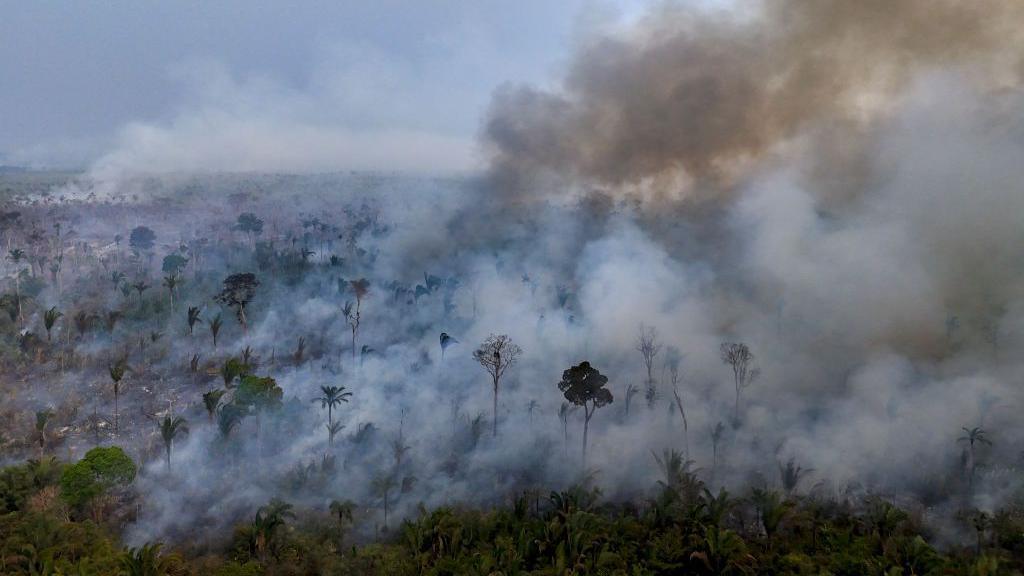
In 2024, the Amazon saw its worst forest fires in two decades
Meanwhile, the burned area in the Southern California fires of January 2025 was about 25 times larger due to climate change, they estimated, although there are large uncertainties in the precise figures.
Many fires are started deliberately or accidentally by humans. But rising temperatures may also increase the likelihood of lightning in the world's northernmost forests, which can in turn trigger more fires.
The combined effects of shifting land use and climate change mean extreme wildfires are projected to become more frequent and intense globally, according to the UN Environment Programme (UNEP), external.
The number of the most extreme fires may rise by up to 50% by 2100, UNEP suggests.
A really simple guide to climate change
- Published29 October
How do hurricanes form and are they getting stronger?
- Published6 November
What is net zero and is the UK on track to achieve it?
- Published5 November
What is COP30 and why does it matter for climate change?
- Published3 days ago

Sign up for our Future Earth newsletter to keep up with the latest climate and environment stories with the BBC's Justin Rowlatt. Outside the UK? Sign up to our international newsletter here.